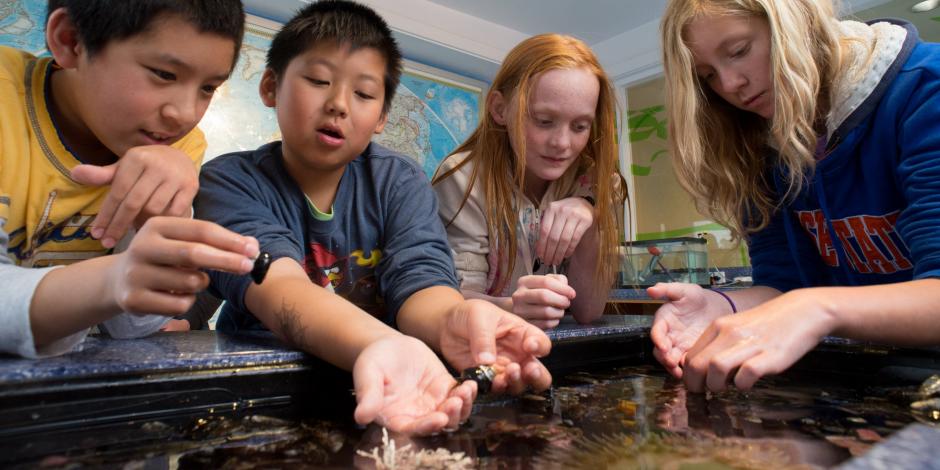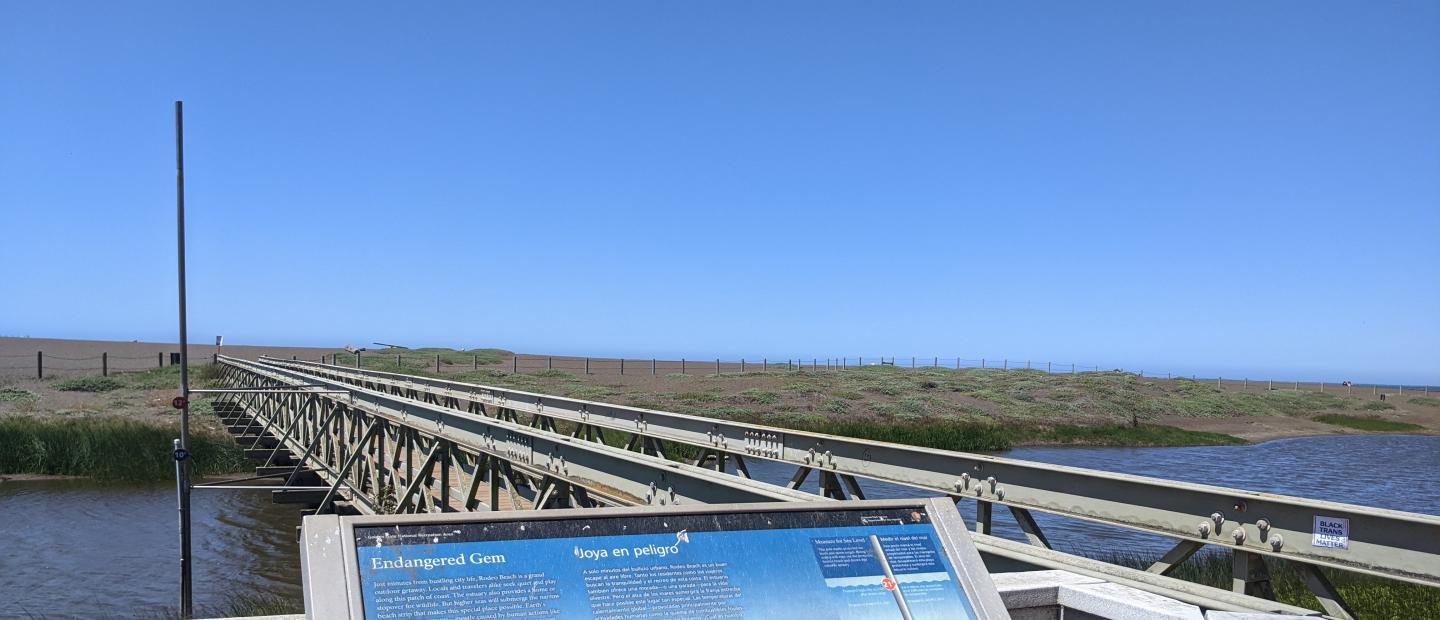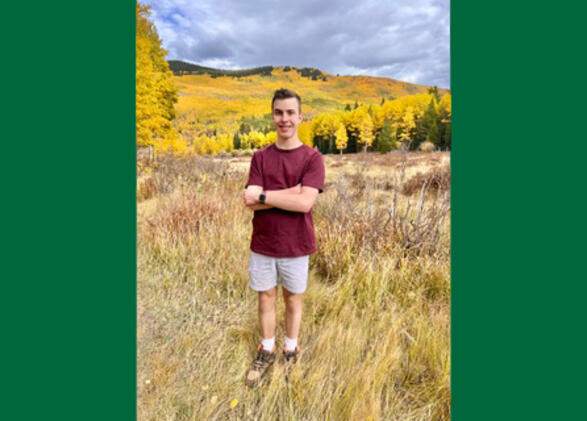Building for the Future: The Climate Science Lab

At a scenic dock in Golden Gate National Recreation Area’s Crissy Field, a tall, metallic pole stands out against the beautiful coastal view. The pole is obtrusive, with stop-sign-red markers and a height eclipsing that of the dock, itself. If you read the signage below, you’ll see that the installation represents a range of scientists’ best estimates of sea level rise at this very spot: the low end (1 foot 8 inches) to the high end (19 feet 8 inches if the Greenland Ice Cap melts). The high end marker towers more than five feet above the heads of curious visitors, a startling, tangible reminder of the potential devastation of climate change.

The Golden Gate wayside installation was the first of its kind created by the National Park Service, so it comes as little surprise that the park is the future home to another inspiring focal point of climate change education: NatureBridge’s Climate Science Lab.
“As an environmental organization, we really have to address climate change,” says NatureBridge Chief Development Officer Aaron Rich.
“I think for a long time, our educators have incorporated climate science into their teaching, and we want to expand upon that. It’s much like our intertidal marine lab in that way.”
The intertidal marine lab was borne out of a request by many schools for “tidepool” experiences to be part of NatureBridge’s Golden Gate programming. However, it was difficult to provide due to the seasonal and unpredictable nature of tidepools. The lab, which was eventually funded by a generous grant from the Gordon and Betty Moore Foundation in 2011, provides hands-on educational experiences for students that mimic those tidepools and allow the study of animal physiology and taxonomy.
“With [the intertidal marine lab], we really saw the benefit to our curriculum because of all the teaching that goes on before and after the students’ time in the lab,” says Aaron. “We gain depth and we gain breadth because we have this focal point where kids really connect with marine science. If we can create a really compelling space around climate science, hopefully it serves as a point of gravity.”
Shane Easter, a NatureBridge Golden Gate board member and Director in the Renewable Energy and Environmental Finance group at Wells Fargo, has been actively involved in the lab’s design and development.
“We’ve identified the space where the Climate Science Lab will exist in GOGA [Golden Gate], but our approach is to build out the curriculum first,” says Shane. “From the curriculum we can then assess our design needs and figure out what features we need.”
We gain depth and we gain breadth because we have this focal point where kids really connect with marine science. If we can create a really compelling space around climate science, hopefully it serves as a point of gravity.Aaron Rich, NatureBridge Chief Development Officer
For now, the specs and potential blueprints are purposefully vague as education experts map out lesson plans. What we do know is that the lab will not be a sterile, hushed environment. “This isn’t going to be a museum setting with a series of installations,” says Aaron. “I expect the space to be flexible, and we’ll rely on the brilliance and flexibility of our educators to seamlessly blend the setting into their learning experiences.”
The creation of a climate science lab presents numerous challenges. Technology is a topic that is constantly discussed in the meetings about the lab, especially for an organization that prides itself on getting youth away from screens and out into nature. “Here’s the CO₂ going up, here’s greenhouse gas emissions going up — that’s a chart, that’s data, that’s probably a screen,” says Shane. “So what we have to do...and what great, smart people are working on, is coming up with location-specific lesson plans that involve observation and data capture, then the students bring what they’ve found back to the lab.”
The collective desire of the Golden Gate board and the educational consultants brought on to develop the curriculum is to steer away from a technologically dependent learning experience and more toward an experience augmented by the thoughtful use of technology. “Technology has to deepen their understanding,” says Aaron. “It can’t be something they could just get on a laptop at home.” Part of the necessity of incorporating technology comes from the fact that climate change is difficult to witness at a single moment in time. Unlike many of the lessons in NatureBridge’s programs, there is little that can be gleaned from pure observation in the absence of a broader climate change science context.
The problem of observing climate change is what led the National Park Service to build the wayside installation at Crissy Field. That same observation problem serves as inspiration for NatureBridge’s Climate Science Lab to be an integrative, experiential hub that creates new ways for its students to visualize and think about climate change.
“I think there are actually so many opportunities and ways to connect observed data points to a larger story,” says Aaron. “Flowers blooming earlier, marine animals creeping up the coast as waters warm, getting kids to think about whether the bridge they just crossed will be underwater in 30 years — the lab will bolster all of that learning.”
The final problem with creating a lab dedicated to the science of climate change?
“It can be a dark topic,” laughs Shane. “You don’t want kids walking away feeling like there’s this incredible challenge that we can’t fix.” “We want the lab to be a place where kids see themselves as scientists, asking questions and exploring solutions that they can design to slow the impact and mitigate the effects of climate change,” says Aaron. “We want them to go home feeling empowered and inspired.”

With the impacts of climate change seen around the entire world, it’s easy to argue that all of NatureBridge’s campuses could benefit from their own climate science labs. Could we see future labs allow observation of climate change-related forest fires in Yosemite Valley or the shrinking ice of Olympic’s Blue Glacier? “The hope is not to stop with GOGA, but to start with GOGA,” says Shane. “But first thing’s first, and that’s building this incredible space.”


